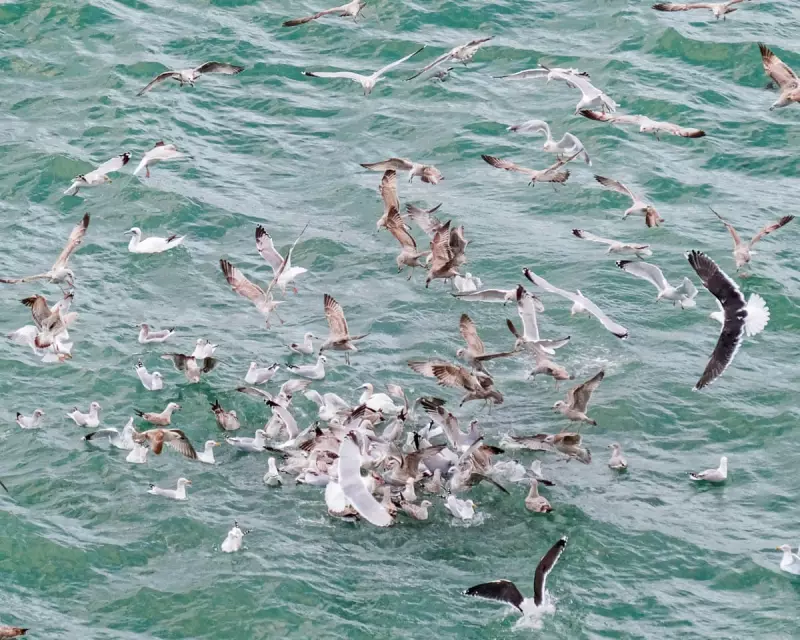
On the shores of Tyrella Beach in County Down, a spectacular and raw display of nature unfolded, revealing the intense drama of survival playing out just beyond the waves. Through a telescope, an observer was granted a front-row seat to a classic marine phenomenon: a full-blown seabird feeding frenzy.
The Avian Assemblage
The scene began with a squadron of juvenile great black-backed gulls, their dark forms stark against the limpid sea. The observer's scope then swept across a messy raft of birds, cataloguing the participants in this aquatic battle. The cast included adult herring gulls, common gulls, and great black-backed gulls, which dipped their heads almost casually into the water. A gannet wielded its sword-like bill irritably at the mob, while razorbills and guillemots, dressed in their seasonal tuxedos, dived down and popped up around the larger birds.
Askance of the main fray, cormorants bucked smoothly under the surface and more gulls tipped from the sky. The pivotal moment of understanding arrived when a winter-white black-headed gull struggled back into the air, a silver rag—a small fish—hanging from its bill. The observer pulled back the scope, realising this was not just random feeding; it was a coordinated attack on a bait ball.
The Mechanics of a Bait Ball
This dramatic event centres on the defensive behaviour of small fish, known as forage or bait fish. Species like sprat (Sprattus sprattus) and young herring (Clupea harengus) often gather in shoals for protection, using the 'many eyes' principle to scan for danger and finding safety within the crowd.
Their coordinated movement, known as schooling, can reduce an individual's risk of being eaten. However, this very strategy can backfire spectacularly. A large, dense school can act as a beacon, attracting multiple predators. In the Irish Sea, these small fish are preyed upon by larger species like mackerel, cod, or sea bass.
While these fish predators largely hunt individually, they can become more successful when attacking as part of a group. If they manage to surround a school of forage fish that has also been tracked by keen-eyed avian hunters, the birds swiftly join the assault. The besieged school of fish, with escape routes cut off, instinctively swirls and flinches into a incredibly tight, swirling sphere—this is the bait ball.
The Frenzy and Its Aftermath
Driven from below by its aquatic attackers or attempting to escape via the only available route, the bait ball spirals upwards through the water until it smashes against the surface. The observer stared down the scope's tunnel at the chaotic aftermath: the sea's surface churned with desperate fish and jostled with hungry birds in a life-and-death struggle.
Then, as abruptly as it began, the spectacle concluded. Almost as if a wand had been waved, the birds drifted apart, leaving behind a slowly unwrinkling sea. The frenzy was over, the bait ball consumed, and the calm returned to Tyrella Beach, a stark contrast to the violent, vibrant drama that had just transpired.





